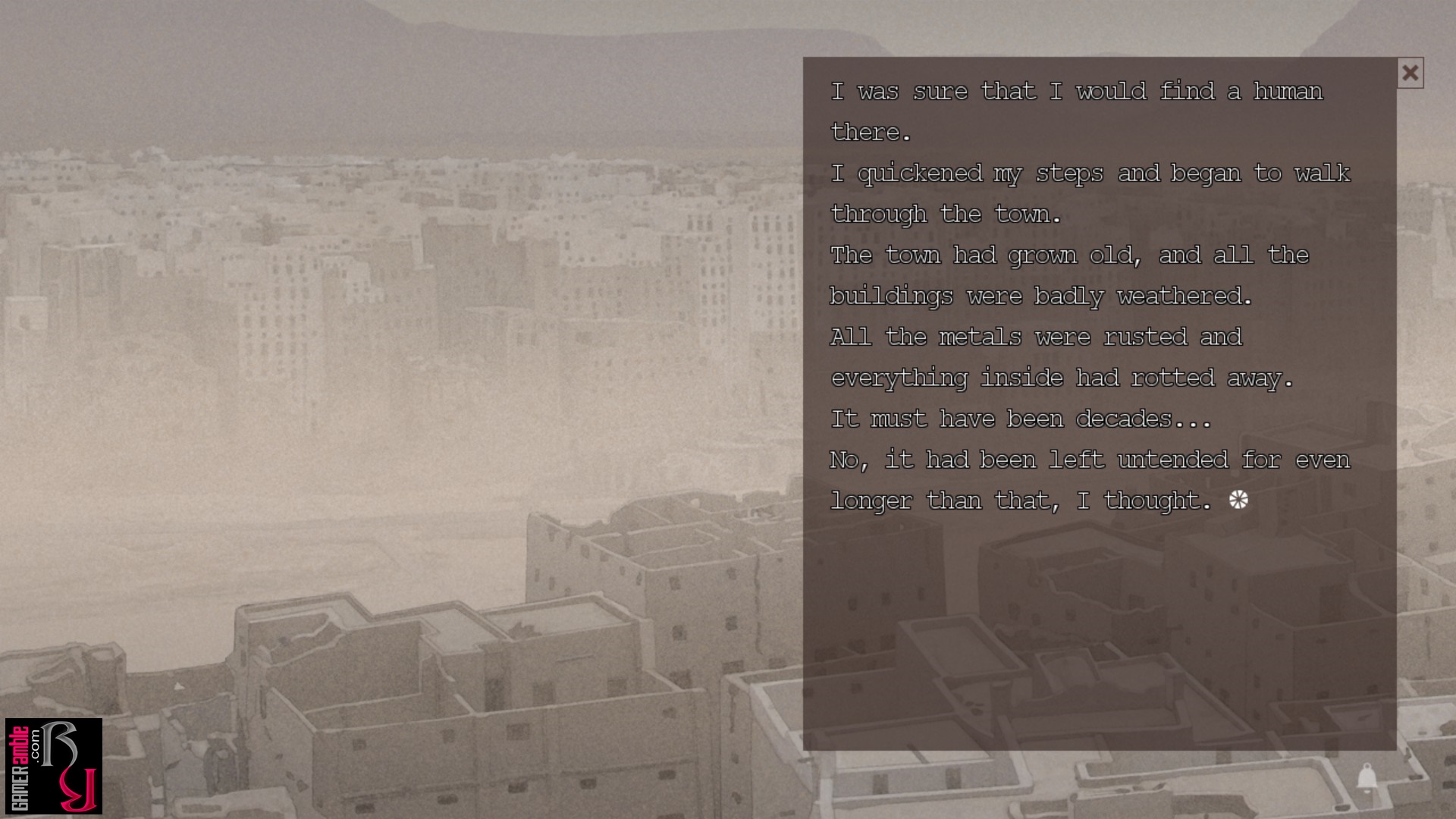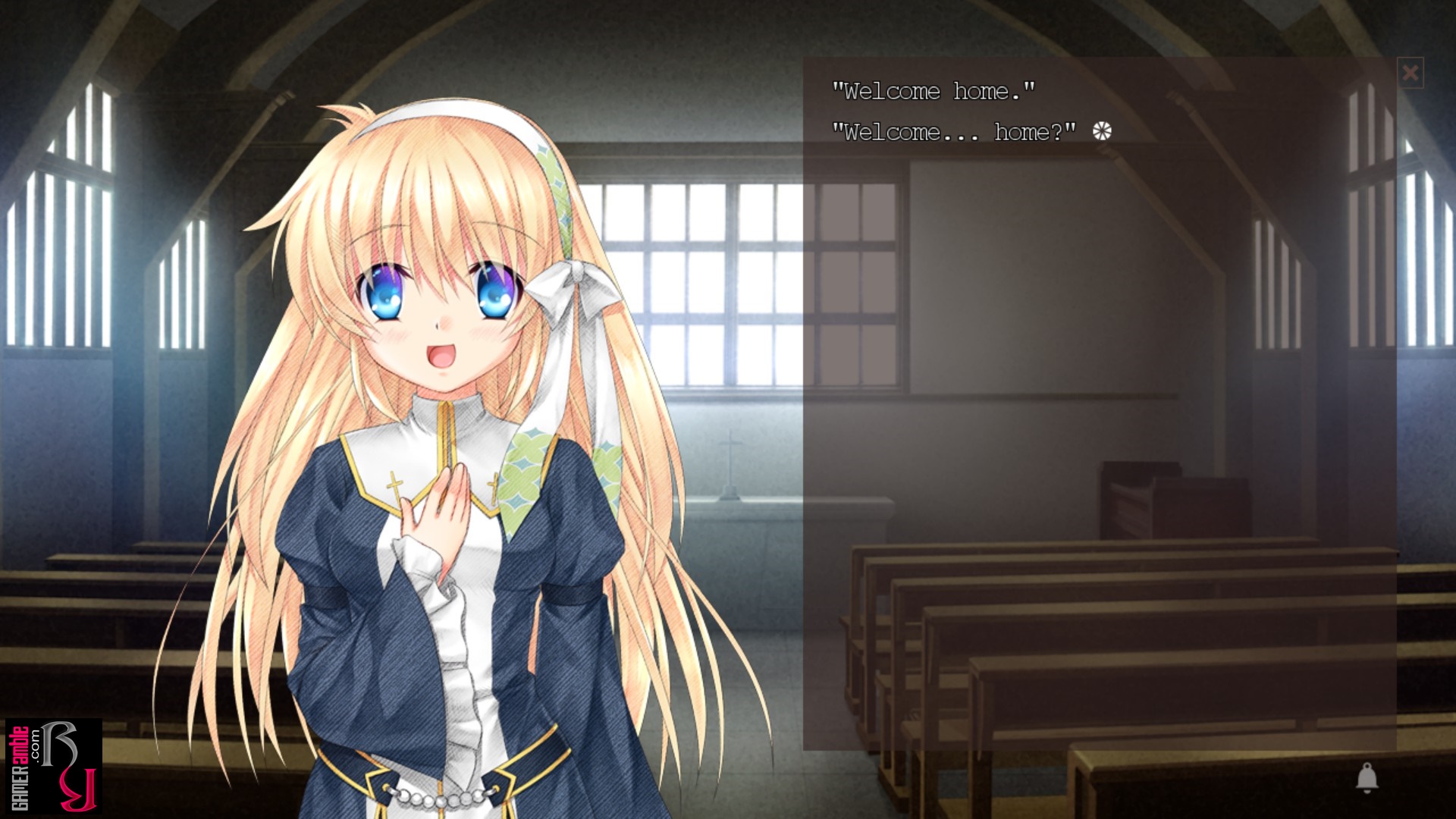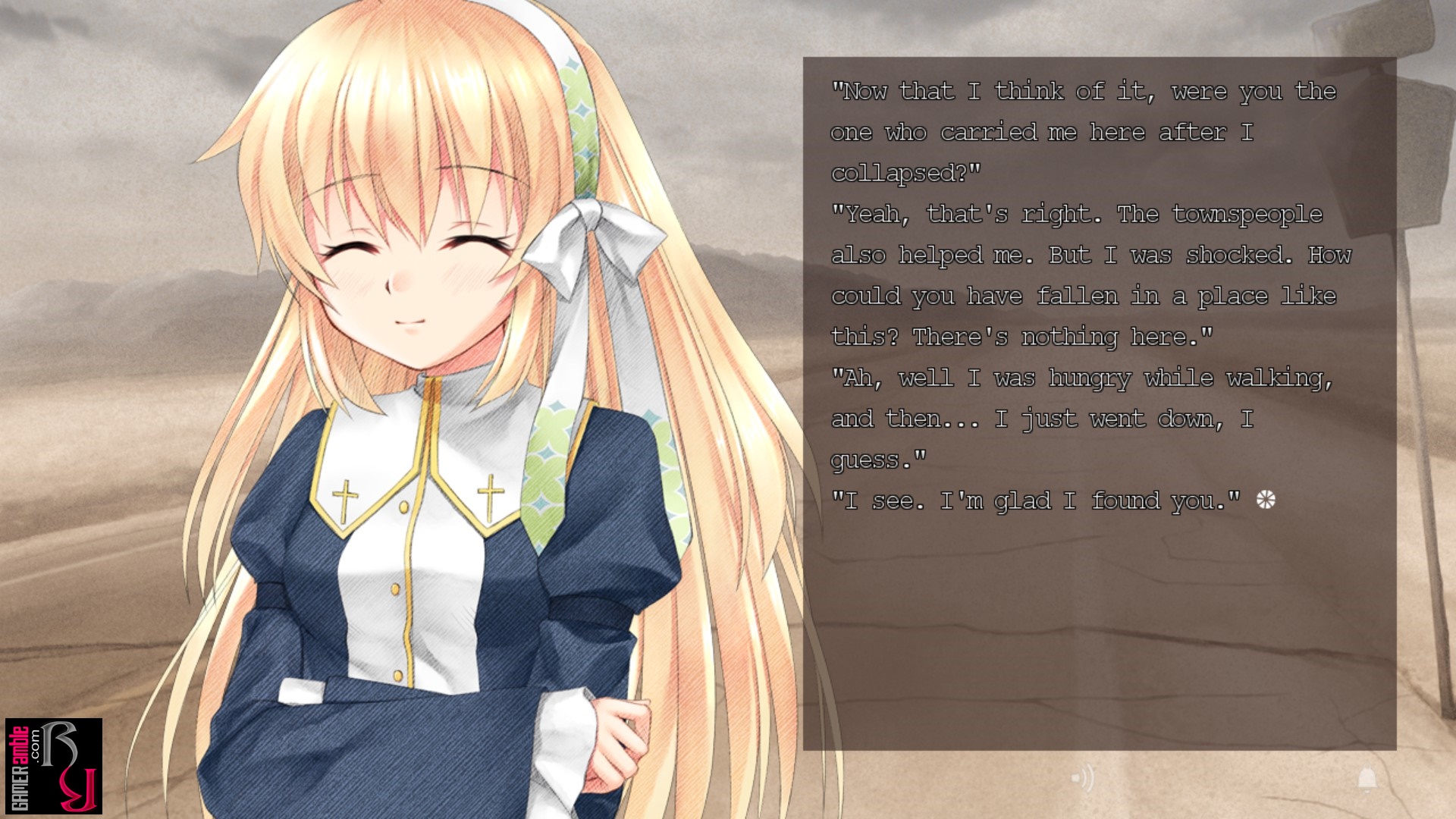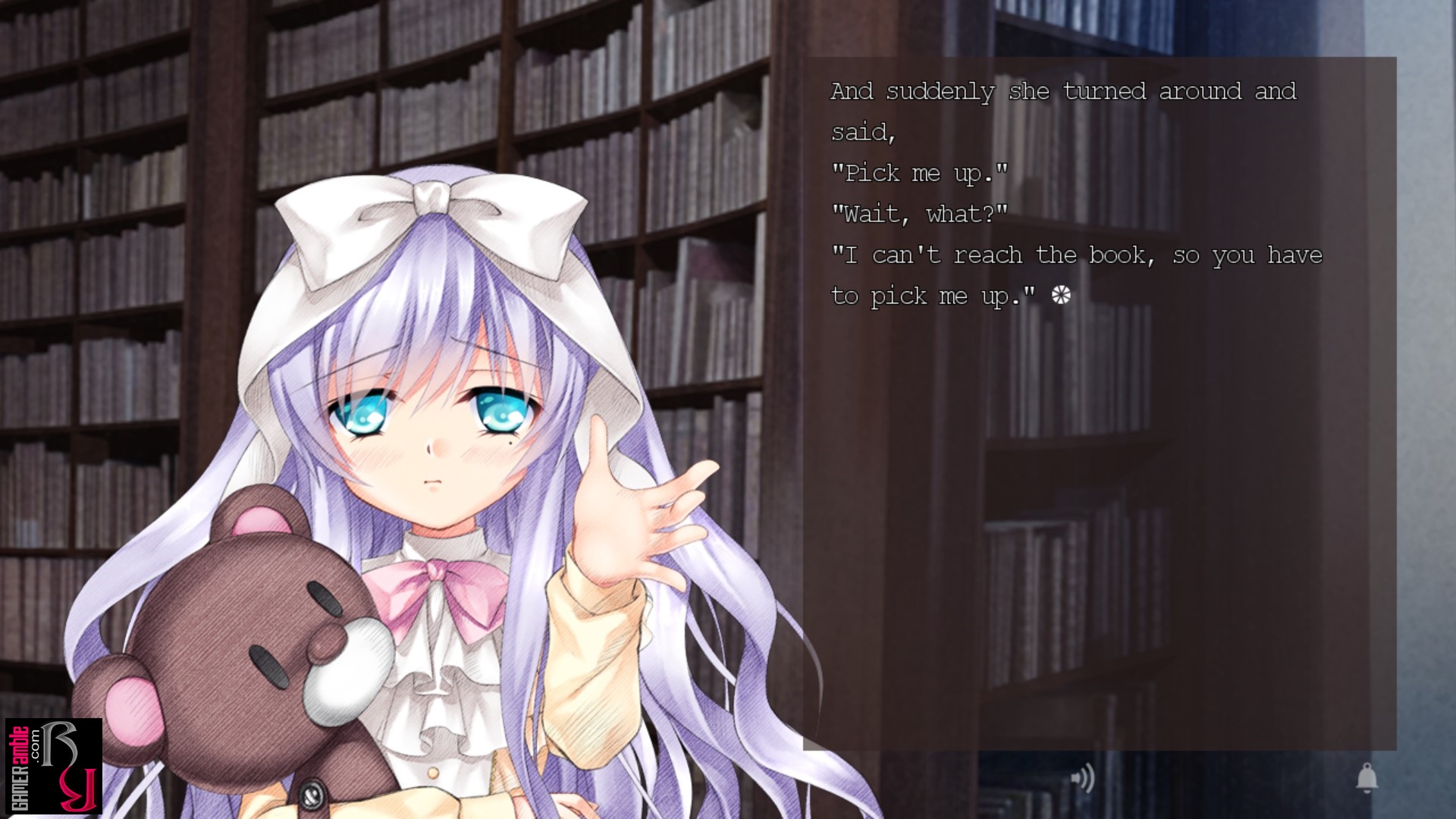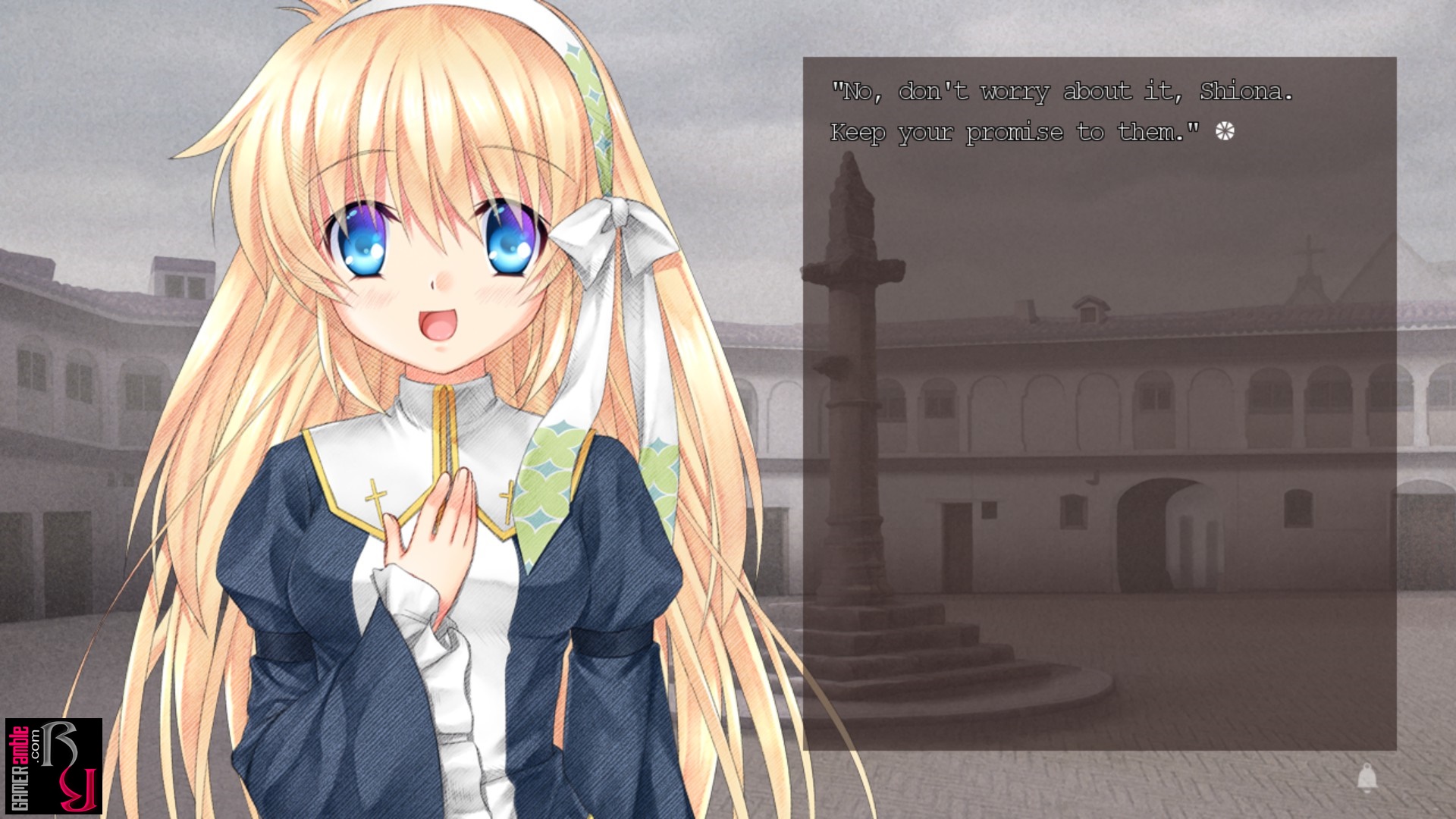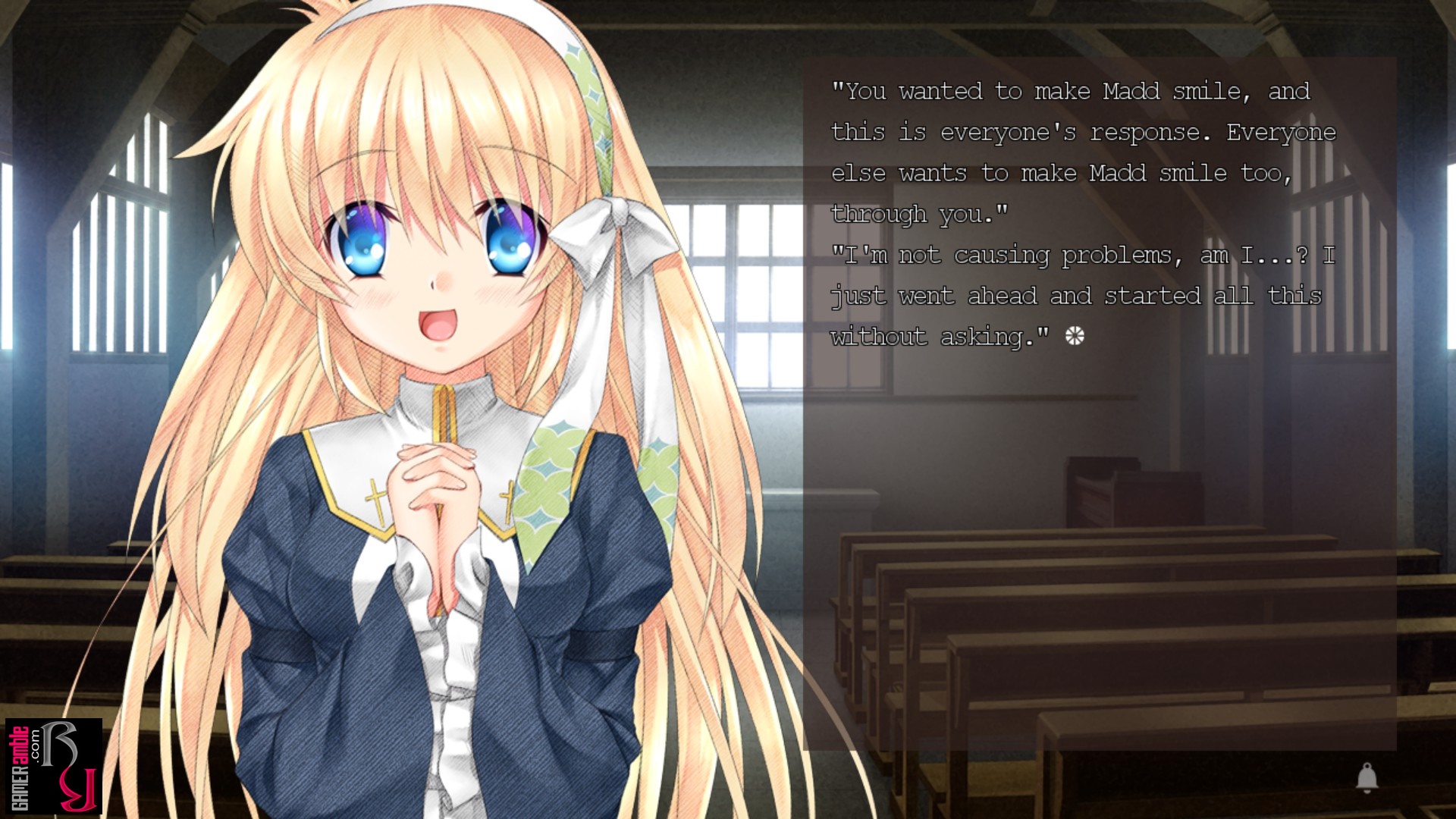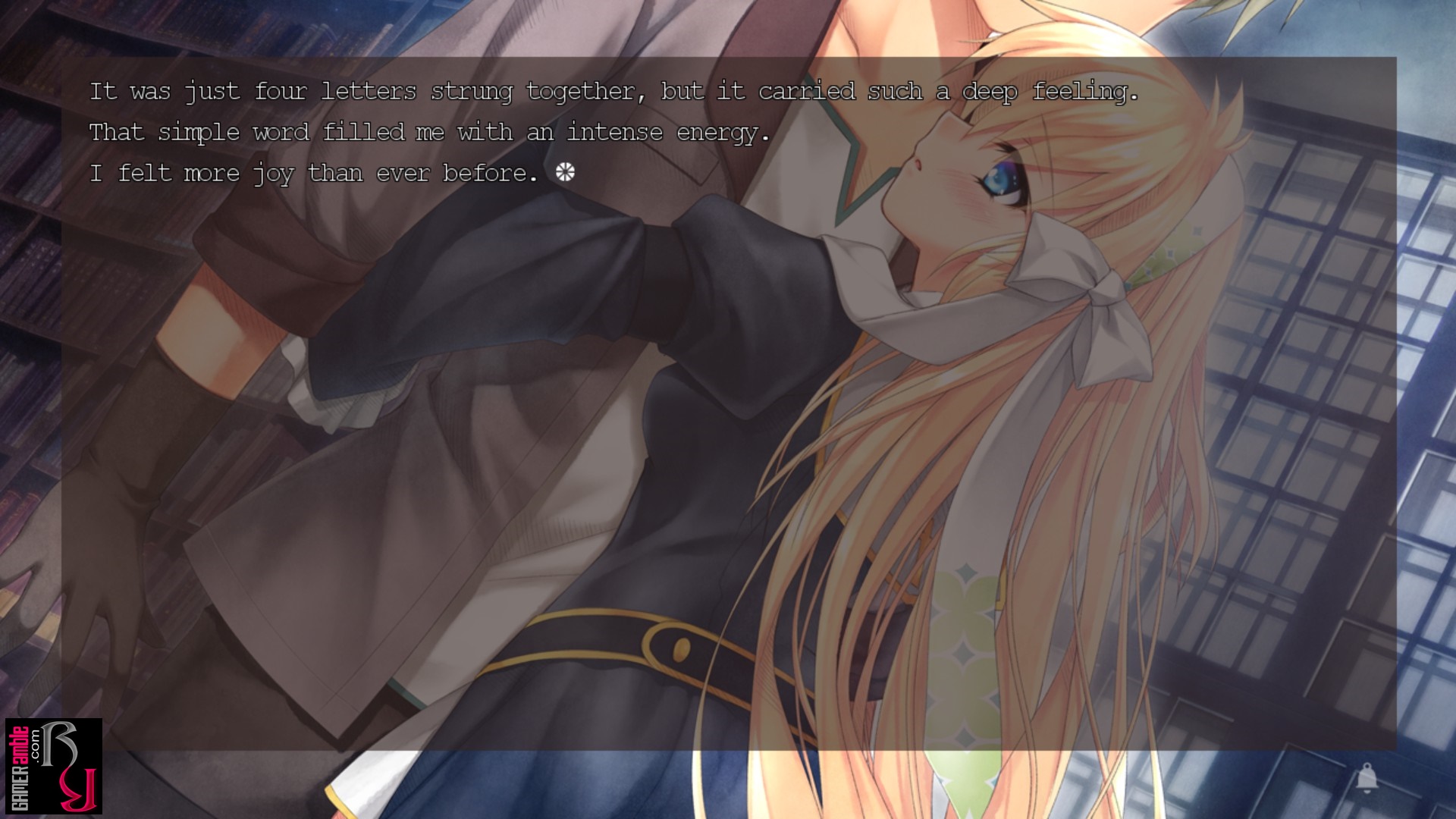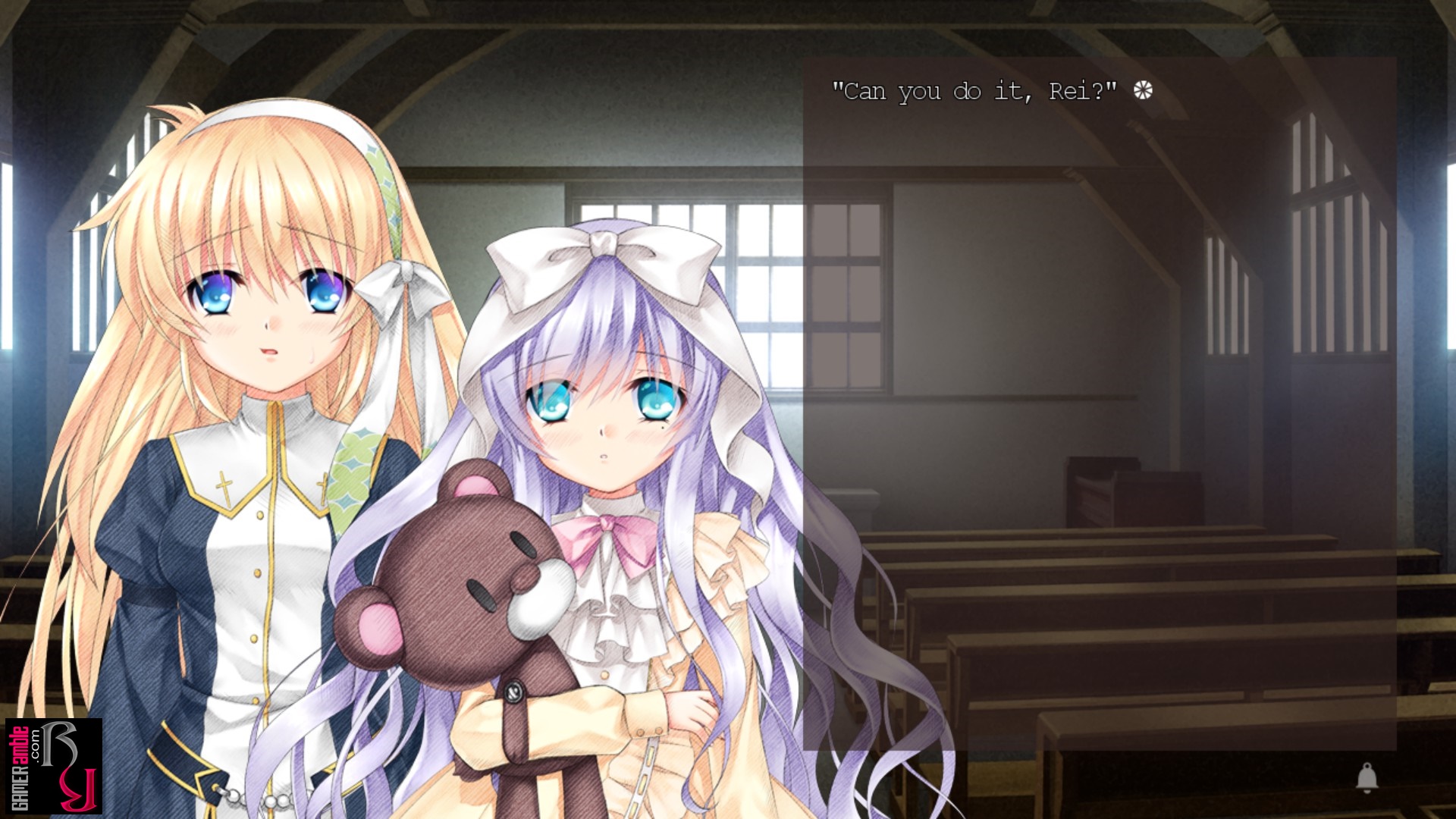Harmonia
Developer: VisualArts/Key | Publisher: VisualArts | Release Date: 2016 | Genre: Visual Novel / Kinetic Novel | Website: Official Website | Purchase: Steam
Harmonia opens in a distant future where the world has been left broken and torn after an immense war. Players view this world through the eyes of Rei, a young man who wakes up in a decayed factory. While Rei has no memory of his life before waking up, he notices that the factory is filled with the broken remains of Phiroids. These emotion-capable robots were created as partners for humans before the world was plunged into chaos. Rei notices that his right-hand lacks skin and consists of mechanical parts, which brings him to the realization that he is a Phiroid. He uses a glove to cover his hand and sets out to fulfill his purpose and help humans. Rei almost doesn’t make this journey through the harsh outside world, but he is found by a kindhearted woman named Shiona, who takes him in. Shiona’s home is a church in a small town, and while staying with her, Rei learns more about emotions, which he feels he lacks.
As with the previous release by Key, Planetarian, Harmonia is a kinetic novel that delights in tugging at readers’ heartstrings. Like Planetarian, Harmonia is also a very short title, which can be completed in about four to six hours, depending on your reading speed. During this time, players are taken through eight chapters where Rei learns more about the small town’s inhabitants, the broken world that surrounds it, and himself. The cast of characters is kept intentionally small, with only Rei, Shiona, and two others featured. The first is Madd, the owner of the local general store, who has quite a temper. The other is Tipi, a young girl living alone in a massive library. Whereas Madd is always mad, Tipi is always sad, which causes Shiona to refer to her as the “blue” girl.
Most of the story in Harmonia deals with Rei trying to be helpful to the people in town while hiding his mechanical arm. However, the pacing is slightly off as the game races to introduce the major characters and world setting before slowing down. As usual for a Key title, the story is filled with sadness and tragedy, but most of the startling revelations are saved for the final chapters. Some players may have guessed some of the twists in the story by then, which lessens their impact.
Visually, Harmonia is a step up from previous Key releases and features beautiful character sprites and background art. The designs for Shiona and Tipi are perfect, but the ones for Rei and Madd feel slightly more generic. Most of the story takes place in and around town, so the backgrounds feature areas like the church, library, town square, and factory. To hammer home the game’s post-apocalyptic setting, the outdoor areas’ backgrounds are intentionally made very brown. However, the character sprites for Shiona and Tipi are bright and vibrant in contrast. The game uses a type of sketched style for the sprites, which looks nice, and while it lacks animations, the characters have plenty of different facial expressions. In addition, the game has a handful of CGs for some key story moments, all of which look great.
Thanks to more than a dozen background music tracks, Harmonia doesn’t disappoint with the audio. One of these is a vocal track, too, which is always a great addition to any visual novel. While Rei is silent, the game does feature Japanese voice acting for Shiona, Tipi, and Madd. The volume of all of these can be adjusted independently or disabled altogether. The usual assortment of options for tweaking the text display speed and auto-mode text speed are also present. Players can also adjust the window transparency, which is handy as the game displays the text over the backgrounds or to the right of characters instead of at the bottom of the screen like other visual novels. As it is a kinetic novel, the game does not have much replay value, but completing the story rewards players with a gallery for viewing the CGs and listening to the music.
Overall, Harmonia is another great release by Key, but it doesn’t quite hit the same levels of emotion as Planetarian. One of the reasons for this is the short runtime, which makes it hard to relate to the characters fully. Some twists are also obvious or don’t change the story enough to make a significant impact. The ending also felt rushed, but we recommend sticking around after the credits for the epilogue, which is a lot more uplifting than we expected. Needless to say, Harmonia is highly recommended for fans of previous titles by Key. However, it is also short enough to serve as a good stepping stone for newcomers to the genre who want to test the waters before committing to a much longer title. It’s not the best release by Key, but it still features plenty of emotional moments to keep players invested.
System Requirements
- OS: Microsoft Windows® 10/8/7/Vista
- Processor: Intel Core 2 Duo or higher
- Memory: 1 GB RAM
- Graphics: 256MB Video Memory (with Pixel Shader 2.0)
- DirectX: Version 9.0
- Storage: 4 GB available space
- Sound Card: Required
- OS: Microsoft Windows® 10
- Processor: Intel Core i3 or higher
- Memory: 2 GB RAM
- Graphics: 512MB Video Memory (with Pixel Shader 2.0)
- DirectX: Version 9.0
- Storage: 4 GB available space
- Sound Card: Required


